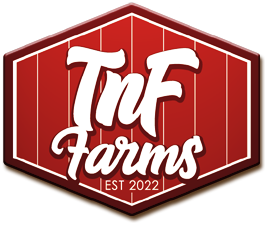Growing Edible Flowers in Florida: A Vibrant Addition to Your Garden
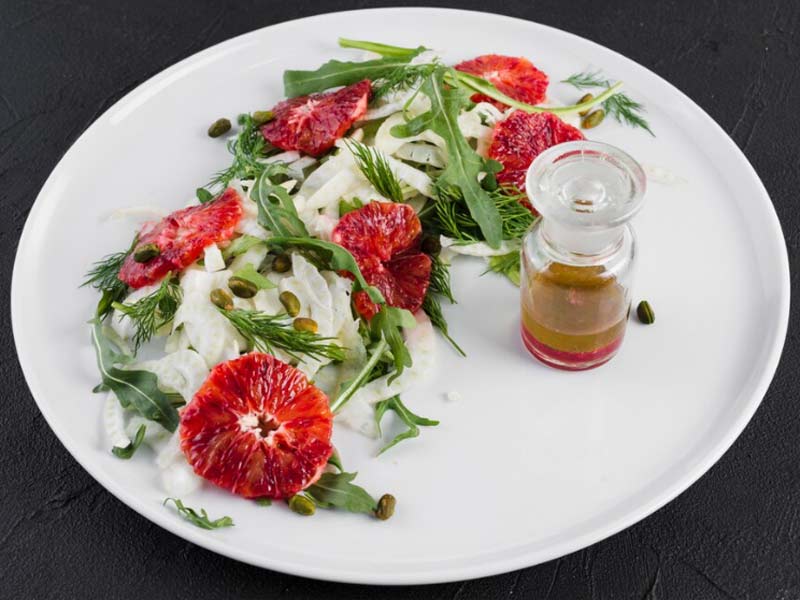
Image by Freepik
Florida’s warm climate and long growing season make it a paradise for gardeners, especially those looking to cultivate edible flowers. These blooms not only add beauty to your garden but also bring unique flavors and colors to your plate. From salads to desserts, edible flowers can elevate your culinary creations.
Cultivating edible flowers in Florida is a rewarding way to combine an abundant garden with culinary adventure. Thanks to the state’s warm, often humid climate and lengthy growing seasons, gardeners have the unique opportunity to grow a dazzling variety of blooms that aren’t just beautiful, but also safe to eat and delicious. Focusing on the process of growing these flowers highlights the joy and simplicity of turning your own backyard into a vibrant, edible landscape.
Why Grow Edible Flowers in Florida?
Edible flowers are both ornamental and functional, offering aesthetic appeal and culinary versatility. Florida’s USDA Hardiness Zones (8-11) provide a near year-round growing season, though the intense heat, humidity, and occasional frosts in North Florida require careful planning. By selecting the right flowers and understanding their needs, you can enjoy a bountiful harvest of edible blooms.
Best Edible Flowers for Florida
Nasturtiums
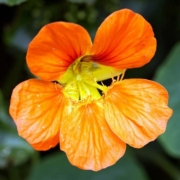 In Florida, nasturtiums stand out as one of the most gardener-friendly choices. They germinate quickly from seed and can be sown directly into garden beds in spring and fall across Central Florida, or year-round in the south. Nasturtiums thrive in well-drained soil and sunlight, rewarding you with an ongoing display of vivid colors. As the plants mature, both the leaves and blossoms are ready for harvest, bringing peppery flavor and festive color to salads and dishes. In the part of Florida we live in, a lot of the sushi restaurants garnish food with Nasturtiums.
In Florida, nasturtiums stand out as one of the most gardener-friendly choices. They germinate quickly from seed and can be sown directly into garden beds in spring and fall across Central Florida, or year-round in the south. Nasturtiums thrive in well-drained soil and sunlight, rewarding you with an ongoing display of vivid colors. As the plants mature, both the leaves and blossoms are ready for harvest, bringing peppery flavor and festive color to salads and dishes. In the part of Florida we live in, a lot of the sushi restaurants garnish food with Nasturtiums.
Taste: Peppery, similar to watercress.
Bloom: Vibrant reds, oranges, and yellows.
Growing Tips: Very easy to grow from seed; plant in spring or fall in Central Florida, year-round in South Florida. Thrive in well-drained soil with full sun to partial shade.
Use: Garnish salads, pasta, or drinks. Both leaves and flowers are edible.
Marigolds (Calendula/Pot Marigold)
 Marigolds are simple to grow and flourish in the Florida sun. Begin by planting seeds in late winter or early spring, setting them in full sun so their cheery orange and yellow flowers can flourish. With regular deadheading, these robust annuals will keep blooming, and their petals can be harvested as soon as they unfurl fully.
Marigolds are simple to grow and flourish in the Florida sun. Begin by planting seeds in late winter or early spring, setting them in full sun so their cheery orange and yellow flowers can flourish. With regular deadheading, these robust annuals will keep blooming, and their petals can be harvested as soon as they unfurl fully.
Taste: Slightly citrusy and peppery.
Bloom: Yellow to deep orange.
Growing Tips: Prefers full sun. Best planted in late winter or early spring. Deadhead regularly to prolong bloom.
Use: Petals add color to salads, rice, and egg dishes.
Borage
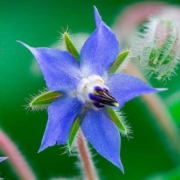 Borage offers another easy-to-grow option for Florida gardeners seeking both beauty and utility. The seeds sprout enthusiastically in well-drained beds and need regular, but not excessive, watering. Once the star-shaped blue flowers appear, they can be snipped for use in salads and as garnishes, lending a mild cucumber essence.
Borage offers another easy-to-grow option for Florida gardeners seeking both beauty and utility. The seeds sprout enthusiastically in well-drained beds and need regular, but not excessive, watering. Once the star-shaped blue flowers appear, they can be snipped for use in salads and as garnishes, lending a mild cucumber essence.
Taste: Mild cucumber flavor.
Bloom: Star-shaped blue flowers.
Growing Tips: Sow in well-drained soil; needs regular watering but dislikes waterlogging.
Use: Toss in salads or use to garnish summer drinks.
Chives and Garlic Chives
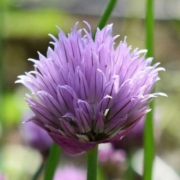 Herbs such as chives and garlic chives not only offer flavorful stems, but also send up edible blossoms in purple or white pom-poms, respectively. These thrive in sun or part shade and reward Florida growers with repeated harvests if regularly snipped. Timing the picking of flowers before they open fully is the key to their best flavor.
Herbs such as chives and garlic chives not only offer flavorful stems, but also send up edible blossoms in purple or white pom-poms, respectively. These thrive in sun or part shade and reward Florida growers with repeated harvests if regularly snipped. Timing the picking of flowers before they open fully is the key to their best flavor.
Taste: Mild onion or garlic flavor.
Bloom: Purple (chives) or white (garlic chives) pom-poms.
Growing Tips: Plant in sun to partial shade. Harvest flowers before they fully open for best flavor.
Use: Add to soups, potato dishes, omelets, or as a savory garnish.
Hibiscus (Roselle/Hibiscus sabdariffa)
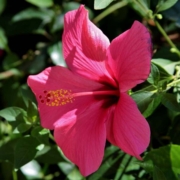 Hibiscus loves the heat and humidity. These plants prefer rich, well-drained soil and need plenty of sunshine to produce their large, sometimes brilliantly colored blooms. Gardeners can gather the tart calyces and colorful petals for jams, jellies, and teas as soon as they ripen.
Hibiscus loves the heat and humidity. These plants prefer rich, well-drained soil and need plenty of sunshine to produce their large, sometimes brilliantly colored blooms. Gardeners can gather the tart calyces and colorful petals for jams, jellies, and teas as soon as they ripen.
Taste: Tart and cranberry-like (calyces).
Bloom: Large red, pink, or yellow flowers.
Growing Tips: Loves Florida heat and humidity. Provide rich, well-draining soil and full sun.
Use: Use calyces for teas, syrups, and jams. Petals can be candied or used as a garnish.
Pansy and Viola
 Pansies and violas, with their whimsical “faces,” are made for the cooler months—a welcome opportunity for Florida gardeners in fall through early spring. These are ideal for containers as well as beds. When the time comes to harvest, the flowers are best picked fresh and used immediately for cakes, salads, and desserts.
Pansies and violas, with their whimsical “faces,” are made for the cooler months—a welcome opportunity for Florida gardeners in fall through early spring. These are ideal for containers as well as beds. When the time comes to harvest, the flowers are best picked fresh and used immediately for cakes, salads, and desserts.
Taste: Mild, slightly sweet.
Bloom: Multicolored, often with “faces.”
Growing Tips: Thrive during Florida’s cool months (fall to early spring). Plant in containers or garden beds.
Use: Top cakes, cookies, sandwiches, and salads.
Squash Blossoms
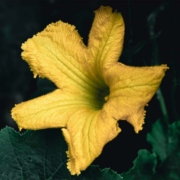 If you’re growing any summer squash, you’re already prepared to enjoy squash blossoms. Early in the day, when the blossoms are open but before they wilt, male flowers can be picked for stuffing or frying. Squash plants love Florida’s sun and warmth, making blossoms a flavorful garden bonus.
If you’re growing any summer squash, you’re already prepared to enjoy squash blossoms. Early in the day, when the blossoms are open but before they wilt, male flowers can be picked for stuffing or frying. Squash plants love Florida’s sun and warmth, making blossoms a flavorful garden bonus.
Taste: Mild and slightly sweet.
Bloom: Large yellow or orange flowers (from zucchini, pumpkin, or other squash).
Growing Tips: Grow any summer squash; harvest male flowers in the morning before they close.
Use: Stuff, fry, or add to quesadillas and salads.
Fennel and Dill
 Fennel and dill are classic edibles with blooms that beckon pollinators, and their yellow umbels can be sprinkled over fish or salads. Both should be planted in full sun, during spring or fall, to ensure strong, healthy growth and a bounty of both greens and flowers.
Fennel and dill are classic edibles with blooms that beckon pollinators, and their yellow umbels can be sprinkled over fish or salads. Both should be planted in full sun, during spring or fall, to ensure strong, healthy growth and a bounty of both greens and flowers.
Taste: Fennel is sweet and anise-like; dill is mildly tangy.
Bloom: Umbels of small yellow flowers.
Growing Tips: Grow in spring or fall. Requires full sun and regular watering.
Use: Sprinkle flowers over fish, salads, or dips.
Basil and Herb Blossoms
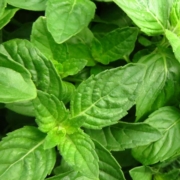 Letting a few of your basil or other herb plants flower can bring extra color and flavor to your Florida garden. Once herbs begin to bloom—typically as temperatures heat up—you can harvest the blossoms for a subtle twist on traditional herb flavors in your dishes.
Letting a few of your basil or other herb plants flower can bring extra color and flavor to your Florida garden. Once herbs begin to bloom—typically as temperatures heat up—you can harvest the blossoms for a subtle twist on traditional herb flavors in your dishes.
Taste: Basil flowers are sweet and herbal; others like rosemary, cilantro, oregano, and mint offer more subtle versions of their leafy flavors.
Bloom: White, purple, or blue, depending on the herb.
Growing Tips: Allow some branches to flower as plants mature, but pinch back to keep bushy growth.
Use: Lovely in salads, pestos, and as delicate garnishes.
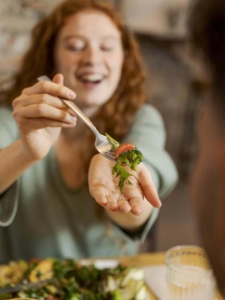 Tips for Growing Edible Flowers in Florida
Tips for Growing Edible Flowers in Florida
Timing is Key: Florida’s climate varies by region. In South Florida (Zones 10-11), focus on planting during the cooler months (fall to spring) to avoid heat stress. In Central and North Florida (Zones 8-9), you may have more flexibility but still need to monitor summer heat and winter frosts.
Soil Preparation: Most edible flowers prefer well-drained, slightly acidic soil (pH 6.0-7.0). Amend with compost or organic matter to improve fertility and drainage. Raised beds are ideal for areas with heavy clay or sandy soil.
Water Wisely: Florida’s humidity can lead to fungal issues, so water at the base of plants early in the day to allow foliage to dry. Use drip irrigation or soaker hoses for efficiency.
Pest Management: Watch for aphids, whiteflies, and spider mites, which are common in Florida. Use neem oil or insecticidal soap for organic control. Encourage beneficial insects, such as ladybugs, by planting companion herbs like dill or fennel.
Sun and Shade: Most edible flowers need full sun (6+ hours), but in Florida’s intense summer heat, afternoon shade can prevent wilting. Consider movable containers for flexibility.
Harvest Safely: Pick flowers early in the morning when they’re freshest. Ensure they’re free of pesticides and grown organically. Rinse gently before consuming.
Safety Notes
- When planting and harvesting edible flowers, always remember that organic methods are a must.
- Only consume flowers identified as edible; some, like oleander, are toxic.
- Avoid flowers from florists or nurseries unless labeled pesticide-free.
- Introduce new flowers to your diet gradually to check for allergies.
Growing edible flowers in Florida means enjoying not only a vibrant, seasonal show in your garden, but also bringing new tastes and experiences to your kitchen. Whether you scatter nasturtiums on salads, bake with pansies, or craft tea from hibiscus, every step begins with nurturing and tending your garden beds, experiencing the full cycle from sowing to savoring.
